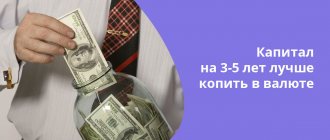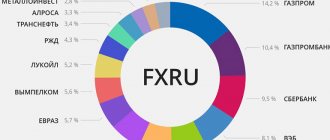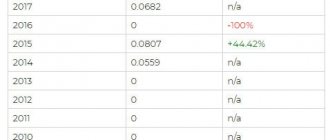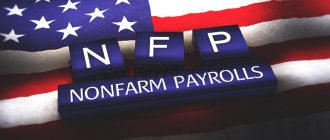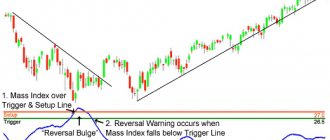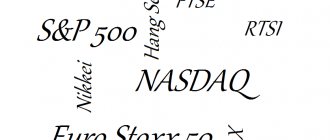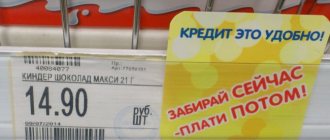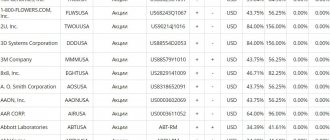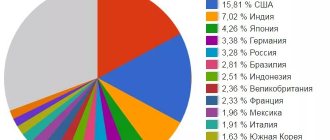Structural / structured products − investment instruments that include shares, bonds, as well as derivatives market instruments (usually options). Structured notes and bonds are the most popular types of exchange-traded structured products. “Structures” also include trust agreements and investment life insurance (ILI). Is it worth investing money in instruments of this type in order to make money on the stock exchange and receive passive income? What risks are associated with purchasing structured products through Russian issuers such as BCS, Sberbank, Finam and ITInvest?
Structural notes
“Structured note”, “structured product”, “structured” or “structured bond” - probably each of us heard these phrases from our manager when we came to renew our bank deposit. At the same time, the manager often describes this investment instrument as something very attractive, with high returns and “almost” no risks. Let's try to figure out together what a structured product is, when it can be used to preserve and increase personal wealth, and when it is better to stay away from it.
Real reviews
To help you decide whether it’s worth working with the company or not, I collected real reviews.
Traders
Clients
I was unable to find positive opinions from traders and clients.
The essence of structured products
As a class of investment instruments, structured products or, as they are sometimes called, “structured notes,” appeared on US stock markets in the late 60s of the last century. Currently, the total number of structured products produced worldwide amounts to tens of trillions of US dollars. In Russia, this type of financial solutions appeared in the late 2000s, but it has become widespread among private investors in the last 3-5 years. Often, a structured product is some combination of simpler and more familiar investment instruments, for example, stocks, bonds, futures, options, etc. These combinations can be relatively simple, for example, as in the case of a note with full or partial capital protection, consisting of a bond and an option on a certain underlying asset, or quite complex, including 5-6 or more instruments. The instruments are selected in a certain way to create the desired investment profile, in other words, they are structured. Hence the name of this type of financial decision. The packaged structure or combination is offered to investors as a single security.
Character traits
Structured products are a whole universe of solutions with various risks, returns, conditions, terms, etc. Each product has its pros and cons. However, almost all have common features. Firstly, their lifespan is limited and known in advance - from one week to several years, but this parameter is always known in advance and when this period occurs, the structural note is extinguished. In some cases, it can be repaid before maturity if certain conditions are met, but never later. Secondly, each structure has a set of conditions on which the final financial result depends. The conditions can be very different: the growth or fall of the underlying asset does not exceed a certain value, the asset being within the price range or, conversely, leaving it, the growth of one asset while another falls, etc. The terms of the structured product are the main thing that an investor should pay attention to, because The success of the investment depends on them, but at the same time, they are not always transparent and understandable. Below we will examine in detail the two most popular types of structured products among Russian private investors, products with full/partial capital protection and with conditional protection. But before we look at specific cases, we should discuss several general issues regarding the current practice of investors working with this asset class.
Important news and valuable ideas
Subscribe to our Telegram channel we are on Telegram
Goods
An investment product is one of the basic concepts in economic science. It should be taken literally. It should be understood as a product purchased with invested funds. Investors use such products to organize the production process at enterprises. With their help, production is expanded and modernized, the volume of output is increased, and production capacity is increased.
Investment goods are:
- buildings and structures in all their manifestations. This could be a factory workshop, an electrical substation, a warehouse for finished products, or office space. That is, all the structures that are necessary for the normal organization of the enterprise;
- transport communications. They should be understood as roads and railways, gas and oil pipelines;
- machines and production lines. This should also include spare parts and components of all mechanisms and equipment that are used in the factory or plant in question;
- raw materials and supplies. This group includes everything from which the final products produced by the enterprise are made.
Do it yourself
We wrote above that a structured product is almost always a combination of simpler investment instruments. It follows from this that any private investor is able to independently assemble such a combination in his investment account, without resorting to the services of banks. In some cases this is true. By purchasing, say, a Sberbank bond and a call option on the RTS index in a certain proportion, the investor will independently form a structure with full capital protection and a bet on the growth of the RTS index. Moreover, the potential profitability of such a “homemade” structured product will be significantly higher than if you purchase it in the form of a ready-made solution from the same Sberbank. But there are several difficulties that do not allow private investors to engage in structuring on their own. Firstly, not everyone, even the most experienced investors, are able to clearly determine the combination of which instruments and in what proportion they need to be collected to obtain the desired investment profile. And secondly, not all instruments are available to private investors. If with bonds and options on the RTS index everything is more or less simple, at least for short investment periods, then creating a similar structure, for example, for gold will be problematic, because Although formally such options exist on the stock exchange, the trading volume on them is practically zero, and no one will enter into an over-the-counter transaction with a private investor. At this moment, banks and investment companies appear ready, as an intermediary, to take on the work of selecting, searching and packaging a structured product in the form of a security, and then offering this security to the investor. Of course, for all the above work, the bank charges a commission, which we will discuss in more detail later.
How it all began
You come to a bank or broker and express a desire to invest money profitably. And so that the profitability is greater. And reliability is higher.
Standard bank deposits do not offer interest on deposits. It turns out some pennies.
It’s kind of scary to go to the stock exchange. You've heard that this is a very risky market. And although you can make money. But there is also a possibility of incurring losses. The market jumps like crazy: up and down, and sometimes just down, down and down again.
You are not ready for this. And you have no idea what to buy? Some shares are incomprehensible. Which ones? And why some companies and not others?
There are too many unanswered questions.
"Calmly. There is a way out,” they tell you.
All your problems and fears are completely solvable.
The consultant (who is also a broker, who is also a sales manager) begins to tell you in confidence how to invest your money in a very profitable and ultra-reliable way.
There is one good investment option. And I’m only telling it because I liked you. You're a good guy (girl). As a brother, I will share with you the topic of how to eat fish and... oh, this is from another fairy tale. That's not what we're talking about now.
In short, there is a product with guaranteed capital protection. That is, you definitely won’t lose money. So that it doesn't happen. And with simply huge, no, not like that - HUGE profitability potential .
Imagine. Without risking anything, you can earn money. And you don’t even need to do anything. Our highly qualified professionals with honors diplomas and a bunch of certificates in the field of finance and hundreds of years of practice will do everything for you, bro.
You can say you're already in chocolate (... soon you will be... maybe... someday... probably).
Just keep in mind that the threshold for entering the “golden Eldorado” starts from 300-500 thousand rubles.
Only the rich can afford it (that's basically how they invest). And they know exactly what to pay money for. For quality. Exclusive. A real investment product of high quality.
Well? Are you in?
Damn, the brute is interested. Let's lay out what you wanted to offer.
All the clients swam. He's hooked.
The bank will definitely make money
The commission of a bank or investment company offering a structured product to its client is usually 3-5% of the investment amount, but in some cases it can exceed 10%, which leads to the following consequences. Firstly, such significant commissions directly affect the final result of the investment. It is easy to calculate that a 5% commission on a three-year note will reduce the investor’s final return by 1.7% per annum, and this is provided that there is a return, which does not always happen. Secondly, the bank remains a winner in any case, no matter how events develop further. The entire risk, and sometimes it is not small, is completely transferred to the shoulders of the investor. If in the end the investor receives a loss, which happens when events develop according to a negative scenario that was considered unlikely at the time of purchasing the structured product, no one will compensate the client for these losses at the expense of the commission already withheld.
Rates
All broker rates are described in a 195-page pdf document. In the content we see 17 standard tariffs and 13 tariffs for accounts on foreign trading platforms. But if you look through this entire document, you will find that 3 standard tariffs and 8 tariffs for foreign exchanges are no longer valid. In total, we have 14 standard tariffs and 5 tariffs for foreign exchanges.
Of course, we will not consider all these tariffs. Let's go through only the most popular ones presented directly on the site.
All tariffs include a depository fee - 175 rubles per month ($3 for the St. Petersburg Exchange), if there were movements on the “Universal” account. The most popular broker tariff for independent trading on Russian exchanges. The turnover commission is 0.057% (but not less than 4 kopecks) on the Moscow Exchange and 0.05% (but not less than $0.02) on the St. Petersburg Exchange. If the value of the assets in the account does not exceed 50,000 rubles, then there is an account maintenance fee - 295 rubles for a simple brokerage account or 200 rubles for an individual investment account. This fee is reduced by the amount of turnover commissions paid.
Before the depositary fee was increased from 10 rubles to 175 rubles per month, this tariff was called the most profitable among Moscow Exchange brokers. "Professional". Another tariff for independent trading. The turnover commission ranges from 0.015% to 0.086% (but not less than 4 kopecks). The turnover commission becomes more profitable than the previous tariff, with daily turnover of 3 million rubles. In addition, this tariff has a lower cost of leverage. The commission on the St. Petersburg Exchange is the same - 0.05% (but not less than $0.02). If the value of the assets in the account does not exceed 50,000 rubles, then there is an account maintenance fee - 295 rubles for a simple brokerage account or 200 rubles for an individual investment account. This fee is reduced by the amount of turnover commissions paid. "Model Portfolio". Tariff for accounts using the broker's service of the same name. Account maintenance costs 0.167% per month, but not less than 177 rubles. The turnover commission is 0.057% (but not less than 4 kopecks). The commission on the St. Petersburg Exchange is standard - 0.05% (but not less than $0.02). “Your financial analyst. Universal". Tariff for accounts using the broker's service of the same name. Account maintenance costs 0.17% per month, but not less than 400 rubles. The turnover commission is 0.057% (but not less than 4 kopecks). The commission on the St. Petersburg Exchange is standard - 0.05% (but not less than $0.02).
The name of the tariff is similar to “Universal”, but this is a completely different tariff. It is distinguished by the presence of a fee for maintaining the account. These rates are often confused. Be careful and pay attention to this point when choosing a tariff. Some believe that by creating tariffs with similar names, the broker is trying to confuse the client. “Your financial analyst. Investor." Another tariff for accounts using the “Your Financial Analyst” service. Account maintenance is free, but if the value of assets in the account does not exceed 50,000 rubles, then there is an account maintenance fee - 295 rubles for a simple brokerage account or 200 rubles for an individual investment account. This fee is reduced by the amount of turnover commissions paid. The turnover commission is 0.24% (but not less than 4 kopecks). The commission on the St. Petersburg Exchange is standard - 0.05% (but not less than $0.02). UPDATE 02/24/21
At the end of last year, the broker rolled out a new line of tariffs (the depository fee was removed, but some tariffs have a subscription fee). You can find it at the link - open-broker.ru/invest/tariffs
Unfair Practices
But it is not the size of the commission as such or the unfair division of profitability and risk between the investor and the bank that most often lead to negative consequences when investing in structured products. The main problem for structured products at the moment is the behavior of the managers selling these products. In English, there is a special term to describe this situation - mis-selling, which can literally be translated as “wrong selling”. In Russian, the phrase “unfair practice” is more often used. The bottom line is that the manager puts his own interests above the interests of the client and deliberately does not disclose all the intricacies of the instrument in order to sell the structured product and receive his reward. It is no secret that the remuneration of managers depends on the commissions they bring to the bank or investment company. This gives rise to a direct conflict of interest, when the manager needs to sell more now, and not think about the consequences for the investor in the future, because, let us remember, the bank receives a commission immediately. In practice, this leads to the fact that structured products are offered to investors as an analogue of a bank deposit, but with a higher return. Of course, this is completely the wrong approach. Let us remind you once again that each structure has a number of conditions, subject to which the investor may receive a loss. But, unfortunately, these conditions are kept silent or presented as extremely unlikely.
Another common problem associated with sales managers is their low financial literacy. The manager may not understand that he is misleading the client, because... he himself does not know all the subtleties and conditions of the structural product. He has a plan that his superiors have set for him, and he must carry out this plan without regard to the possible consequences for the investor. The solution to this problem may be to choose a financial advisor with a wealth of knowledge and many years of experience. But they can sometimes make mistakes.
Capital protection
When developing a plan for where to invest your money, pay attention to the methods suggested on gq-blog.com, as well as not only the expected level of income, but also the potential level of risk. Many companies offer either full or partial capital retention, which is negotiated and specified in the contract. The initial amounts for this are not small. You can monitor how changes are happening remotely by accessing your personal account. Always initially clarify both the predicted risk and the formula for the predicted return. Ready-made investment solutions do not require any hidden commissions or payments.
Examples
Below we propose to consider examples of structured products of the two most popular classes among Russian private investors, notes with full or partial capital protection and notes with conditional capital protection. In different banks and investment companies they may have different names, but the conditions are approximately the same everywhere. We will give each class a detailed description of the conditions, possible scenarios and risks.
Notes with full or partial capital protection and participation in the growth of an index or asset.
What's the point:
- The investment amount is divided into 3 parts
- A portion is charged by the note issuer, bank or investment company as a fee (from 3 to 10% of the investment amount).
- Part is invested in an instrument with a fixed income (from 70 to 85%), as a result it must cover the possible loss from burning the option part.
- The remainder is invested in an option, which is an aggressive bet on the rise or fall of an asset.
- The amount invested in the option is completely lost if the idea does not work out.
- The potential relationship between profit and the growth of the underlying asset is determined by the participation rate in growth or decline.
Financial results:
- Scenario 1. The underlying asset, which was bet on growth, fell in price. The investor receives an amount in accordance with the previously known capital protection conditions (100%, 90% 80%, etc.).
- Scenario 2. The underlying asset has increased in price. The investor receives the initially invested amount and profit from the increase in the underlying asset in accordance with the participation coefficient, which is determined when the note is issued.
Example:
3-year ruble note with full capital protection against rising gold prices with a participation rate of 60%.
Gold price chart, $ per ounce
- Scenario 1. Gold has fallen in price - return on initial investment.
- Scenario 2. Gold price increased by 10% - return on initial investment + profit of 6% in accordance with the participation rate. The return on investment is 2% per annum.
- Scenario 3. Gold has increased in price by 30% - return on initial investment + profit of 18% in absolute terms, because The participation rate is 60%, which corresponds to 6% per annum for 3 years.
Risks:
- Note issuer risk. In the event of bankruptcy of the issuer, no payments are made (regardless of the estimated financial result).
- Fixed income instrument risk. This risk may differ from the risk of the issuer of the note. If a default is declared on this instrument, then it will not be possible to return the invested funds.
- The risk of loss of purchasing power of assets. The notes generally do not provide inflation protection.
- Risk of early withdrawal. If an investor wants to withdraw funds before the note matures, he will have to record significant losses.
Notes with conditional capital protection and periodic coupon payments. They often provide for the possibility of early withdrawal if certain conditions occur.
Most often issued for a basket of 3-4-5 shares (the underlying asset of the note).
What's the point:
- The investment amount is divided into 2 parts:
- A portion is charged by the note issuer, bank or investment company as a fee (from 3 to 10% of the investment amount).
- For the remaining part, a bet is made that the shares that are the underlying asset of the note will not fall below a certain value - a barrier (20-25-30% of the price at the time of issue).
- For the risk of loss, the investor receives a reward in the form of a coupon, the size of which significantly exceeds the rates of bank deposits.
Financial result upon expiration of the note:
- Scenario 1 . The stock fell a small amount (below the barrier). The investor receives the initially invested amount + all coupons agreed upon when issuing the note.
- Scenario 2. Shares from the basket increased in price. The investor receives the initially invested amount + coupons agreed upon when issuing the note (and, in this case, the note can be redeemed ahead of schedule).
- Scenario 3: Stocks from the basket fell by an amount above the barrier. The investor records significant losses, which can reach 100%.
Example:
A five-year dollar note on a basket of Shell, Total, BP shares as a bet on the recovery of oil prices after the March fall in the medium term. Coupon 12% per annum payable quarterly. Barrier 60%.
Brent oil price chart, $ per barrel
- Scenario 1. All shares have increased in price - return on initial investment + 12% per annum in the form of coupons.
- Scenario 2. All shares increased in price, except one, which decreased by 15% - return on initial investment + 12% per annum in the form of coupons.
- Scenario 3. All shares increased in price, except for one, which decreased by 70% - the investor's loss is from 20 to 50% of the original amount (depending on the terms of the note).
- Scenario 4. One of the companies from the basket went bankrupt - a complete loss of capital.
Shell stock chart, EUR per share. The dotted line denotes the barrier level
Total stock chart, EUR per share. The dotted line denotes the barrier level
BP share chart, pounds per share. The dotted line denotes the barrier level
Risks:
- Note issuer risk. In the event of bankruptcy of the issuer, payments may not be made (regardless of the estimated financial result).
- The risk of a decrease in the value of shares included in the note. An investor, as a rule, bears the risk of the weakest stock in the basket, since the final financial result depends precisely on its dynamics.
- Risk of early withdrawal. If an investor wants to withdraw funds before the note matures, the result will be determined by the current quote of the note, which may be significantly lower than the purchase price.
The most risky joint ventures
According to experts, instruments with built-in leverage are considered the riskiest, everything is clear here. Also included in the risky category are baskets of pre-first default bonds. This is a basket of 4-6 bonds, and the bond issuer transfers the risk of one security to the entire basket. If only one company goes bankrupt, the investor receives the face value of this note, multiplied by the real physical volume of the return of funds on the bond of the company that allowed the company to default. The average recovery on the market is 10-30% of the bond's face value. As a result, the investor receives 70-80% of the instrument’s face value from his accumulated funds.
When we open a financial prospectus, we see the profitability that is offered to us. This is just a big trap that you need to be careful with. You always need to clarify where the high profitability comes from and how to catch the financial company. It happens that papers that were purchased on an overheated market are sewn into the product and the risk of its decline is high. There are situations when, without insidious intent, but a paper is added to the basket that historically has high volatility.
There is a concept of credit risk of the issuer that issues these products. Yes, these are large companies, but still.
Tips and tricks
Income terms and formula
We have given examples of only two classes of structured products. In reality, there are much more of them. Each class has different conditions and an underlying investment idea. Therefore, the first thing to do before investing in a structured product is to read its terms and conditions . There is no need to be shy about asking the manager about possible risks: ask to see how they are spelled out in the investment memorandum of the structured product. Also, special attention should be paid to the formula for generating income, because... There are often cases when an investor is told one thing in words, but in fact the result turns out to be different as a result of misunderstanding between the client and the manager or the deliberate omission of important conditions.
Commission amount
The second important step when deciding to invest in structured products is to find out about the fees that the investor will have to pay on entry. The manager must provide this information in full upon the investor’s first request. Knowing the size of the commission, an investor can easily compare it with his potential profitability. For example, if with an expected return of 8% per annum for three years, i.e. the total return is 24%, the commission is 5%, it becomes obvious that the bank does not really care about the future welfare of the investor, it is more important for him to receive a high commission here and now. It is worth thinking about further work with such a bank.
Manager competence
It would be a good idea to find out how well the manager offering an investor a specific structured product understands what he is offering. You can draw conclusions about the manager’s competence by asking questions about the underlying asset of the product and the probabilities of one or another event that may affect its quotes. The manager's tone and confidence when answering questions can tell the investor who is in front of him - an experienced person or a beginner who just needs to sell a product. Unfortunately, this method does not give 100% results.
Issuer risk
It is certainly important to pay attention to the issuer of the structured product. If it is a Russian bank, then it must be large and systemically important, preferably with a maximum credit rating. If it is a foreign issuer, then it is also better to choose it from the world's largest banking groups. But we must remember that the complete risk of bankruptcy of the issuer, and, accordingly, the loss of 100% of the invested amount cannot be excluded. A striking example is the bankruptcy of Lehman Brothers in 2008, which was previously considered an unsinkable giant in the structured products market.
Investing in an idea
And the last, but very important tip when using a tool such as structured products is to invest not in the product, but in the idea that is embedded in this product. The idea could be the growth of some asset, for example, gold, as in the above examples. There may be no strong fall in the prices of a basket of shares from one or different sectors. Finding the exchange rate within a certain range may also be an idea. In comparison, receiving fixed coupons quarterly is not an investment idea. This is only the result of investing in it. Formulating an investment idea on your own can be very difficult, especially for inexperienced investors. In this case, it is better to refuse investments in structured products or contact independent investment consultants with extensive experience. They will help you formulate an investment idea and select a structured product for it, if there is one on the market.
The Investland team has been working in financial markets for many years as an independent investment consultant. Our team consists of experts with at least 10 years of experience in this field. We help our clients choose the right idea and the right tool with which it can be implemented. A structured product may be one of the options, because it is only a tool with certain advantages and disadvantages determined by time, which also determines the possibility of investing in it.
